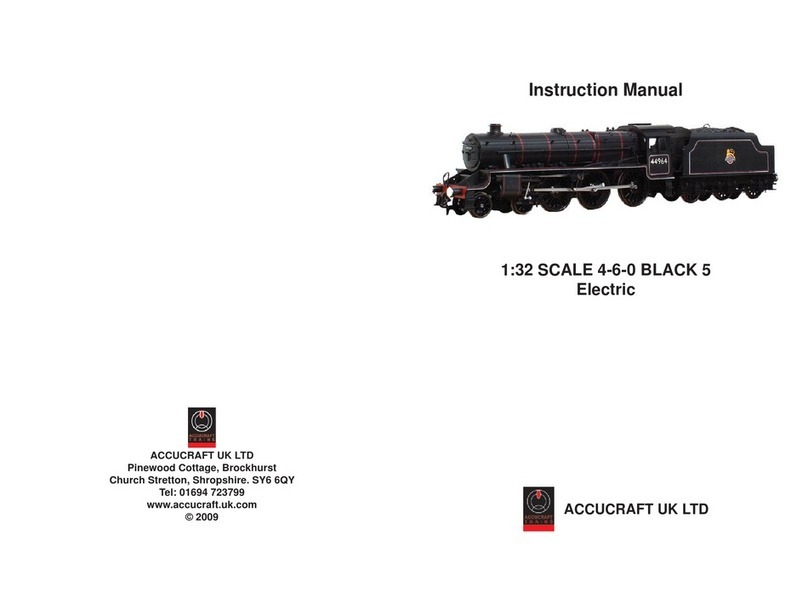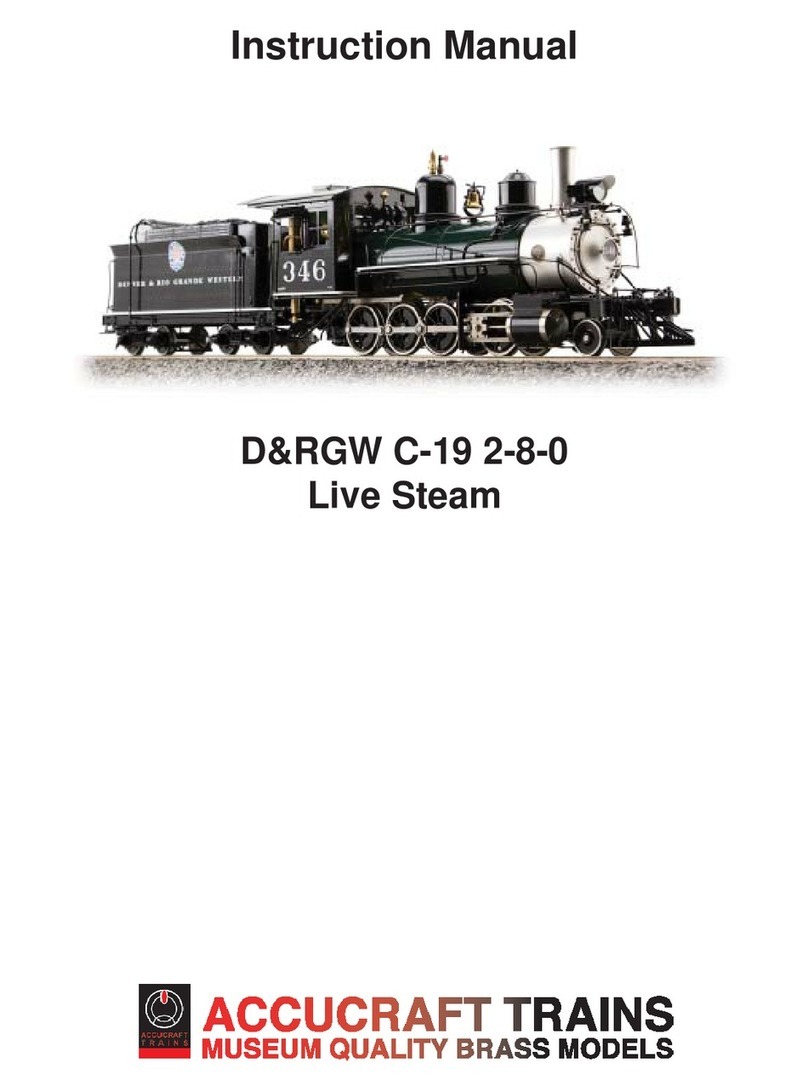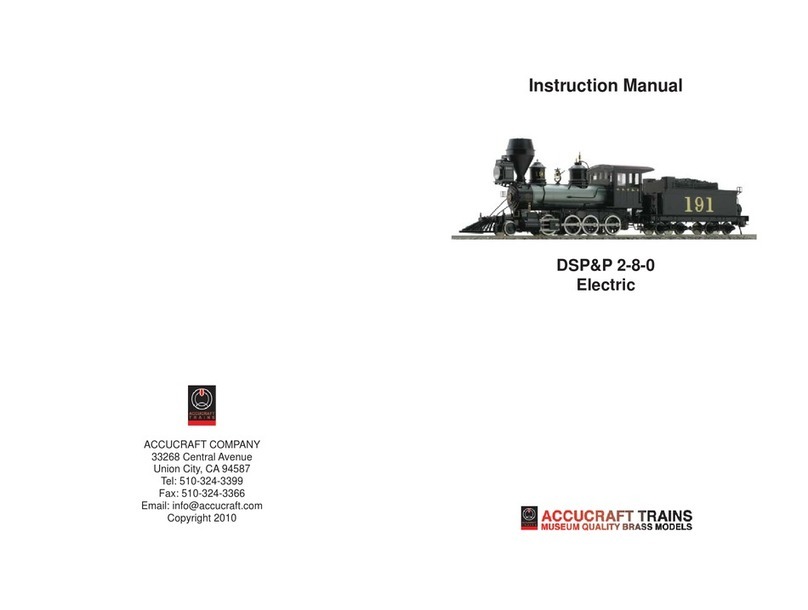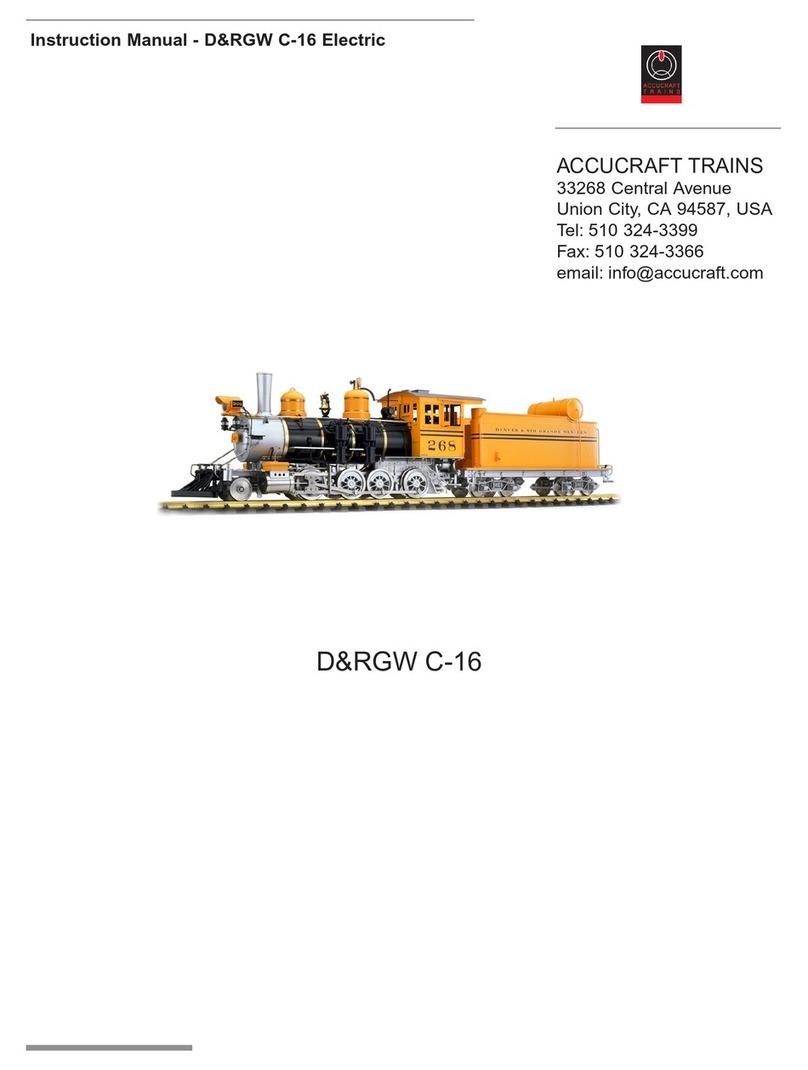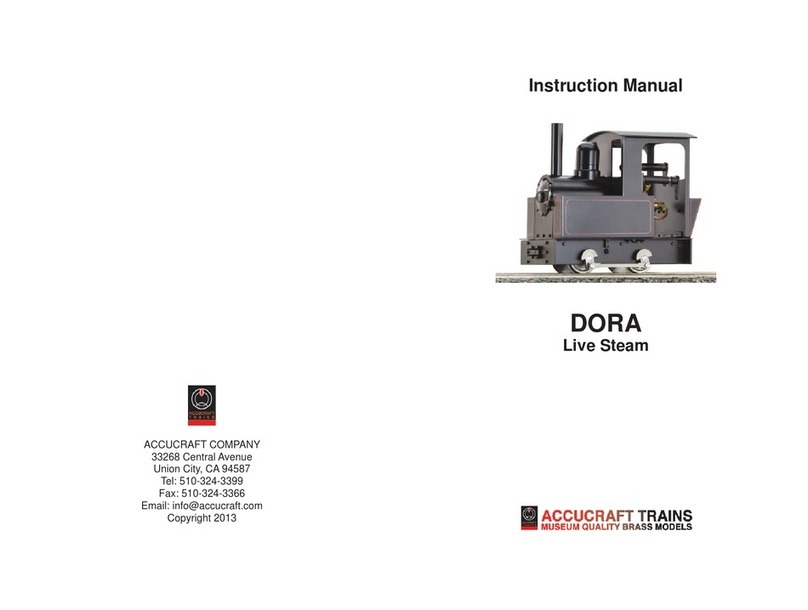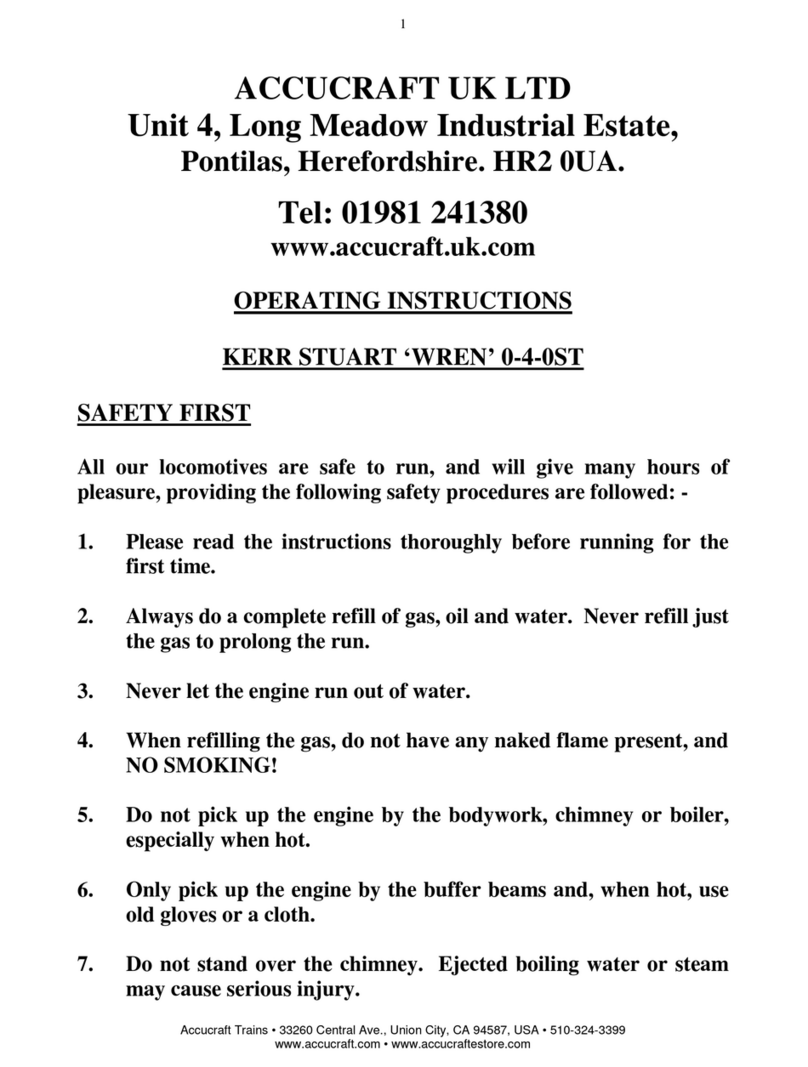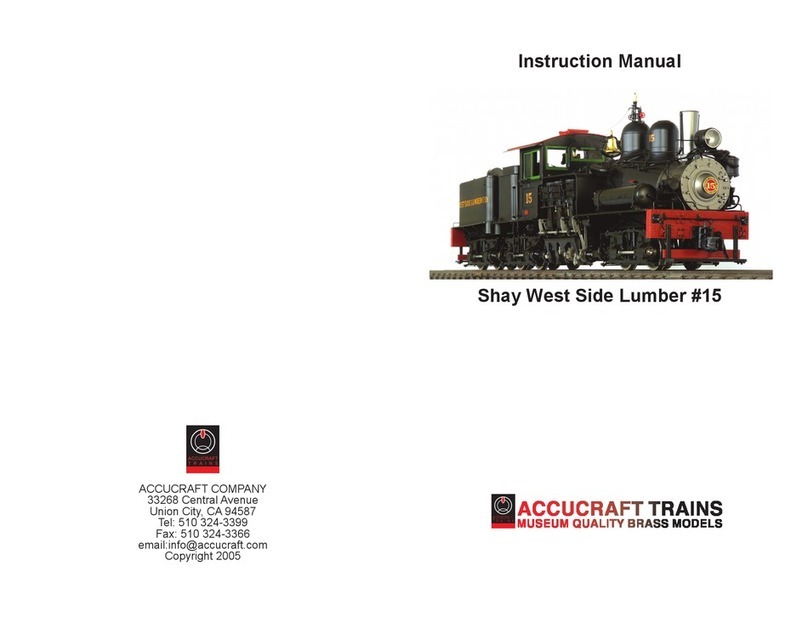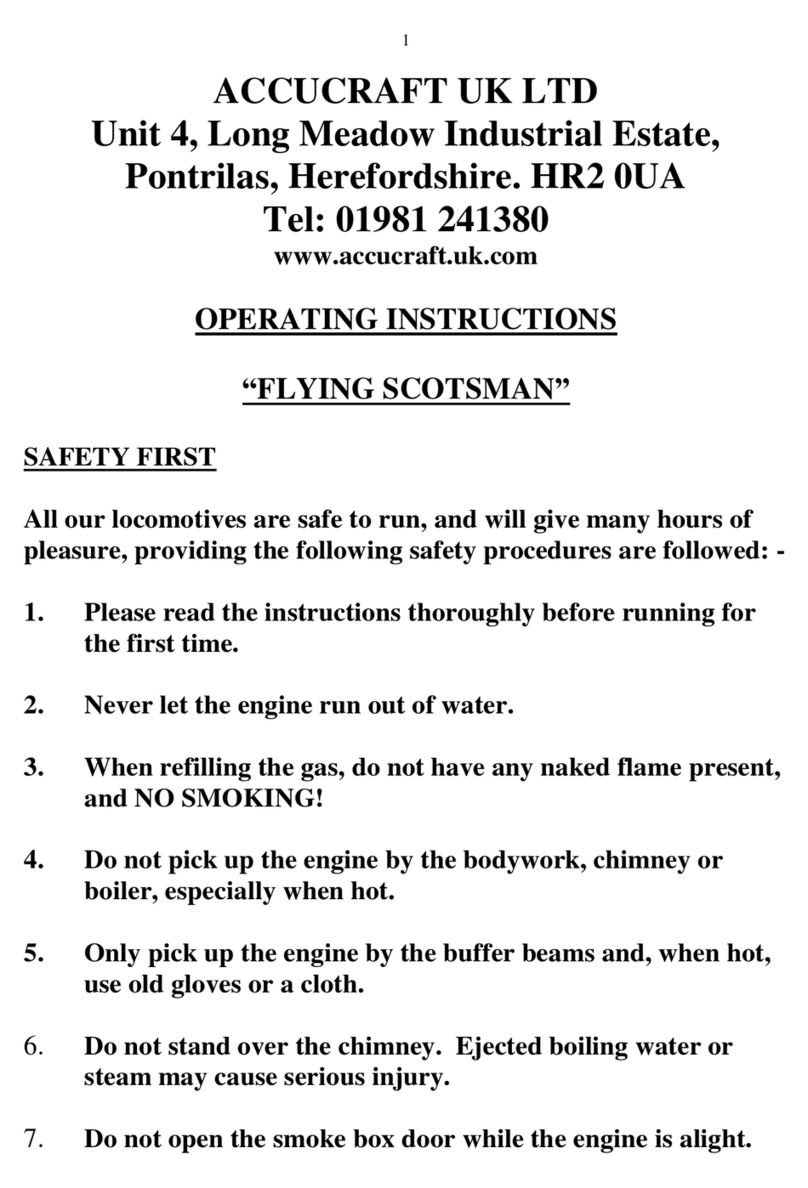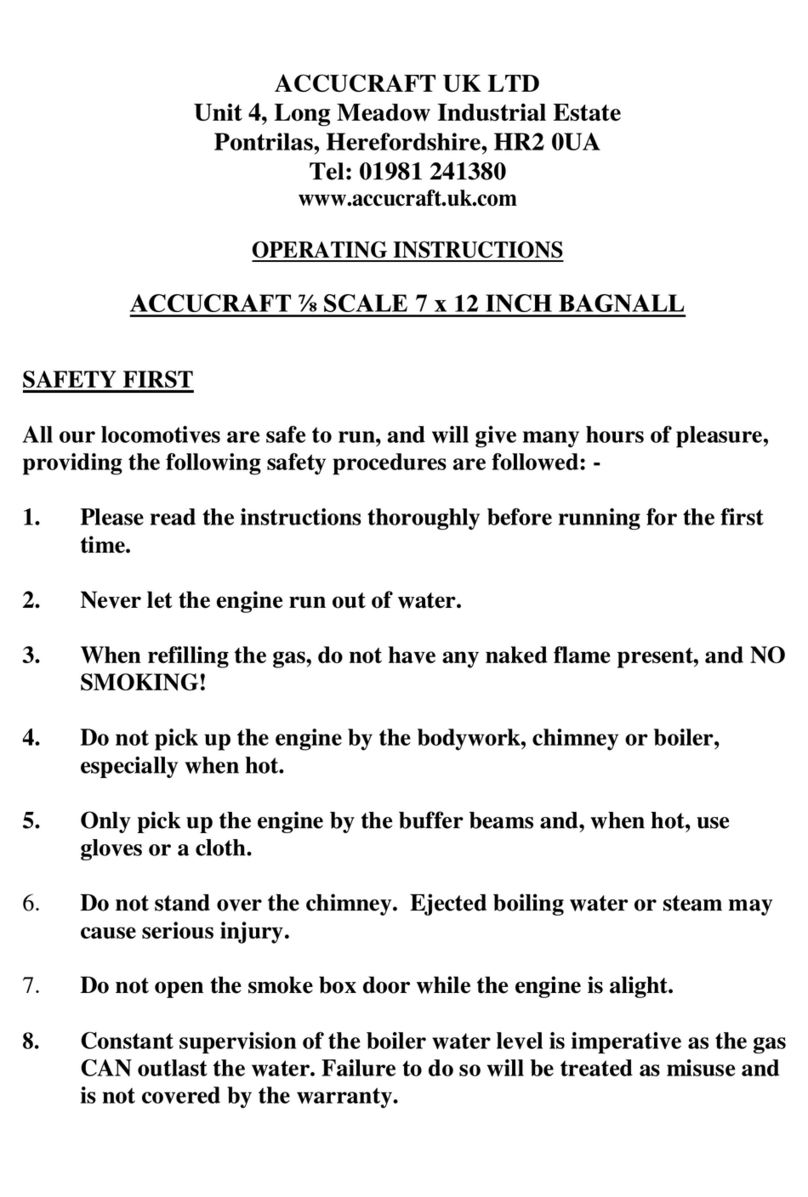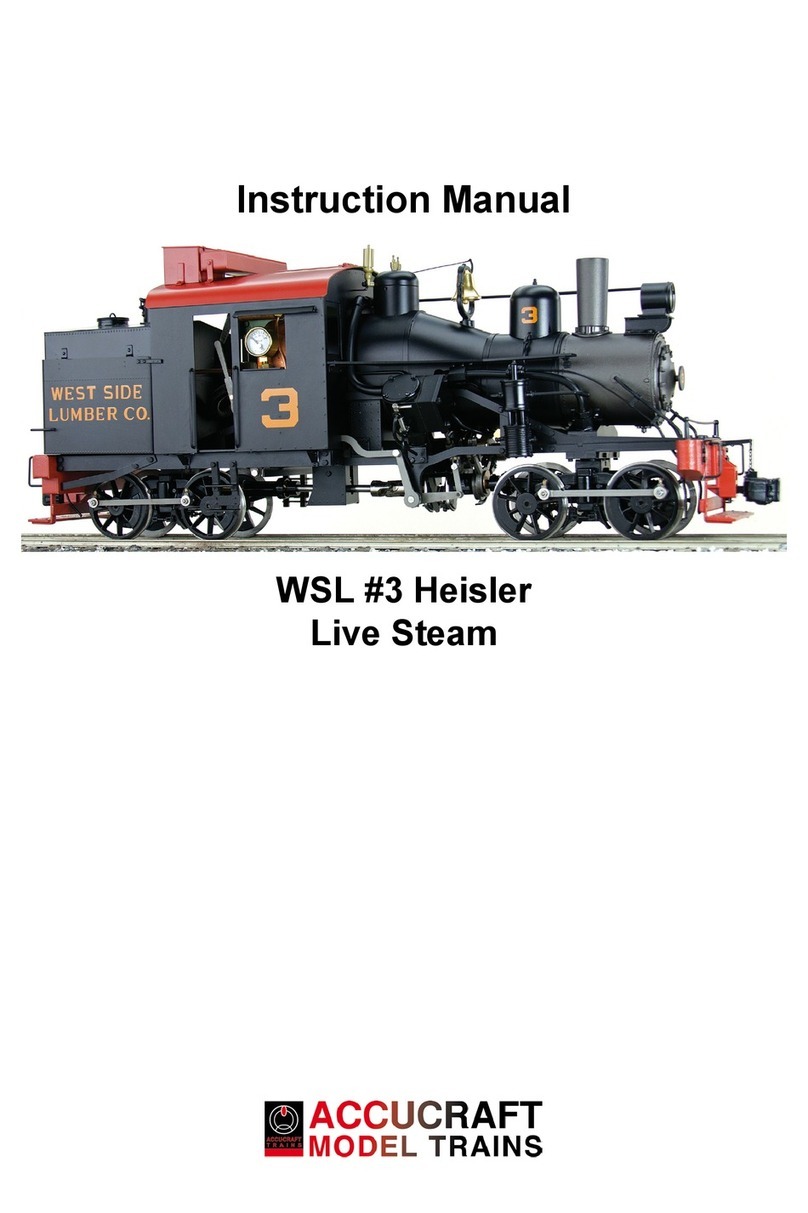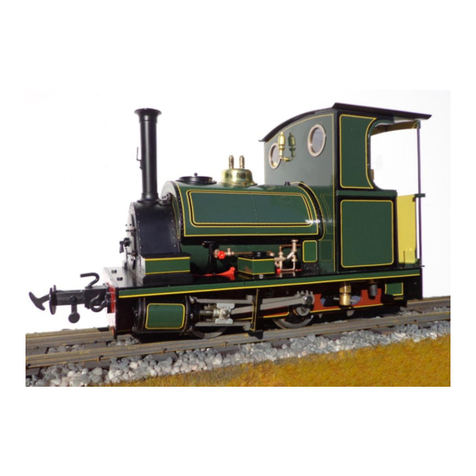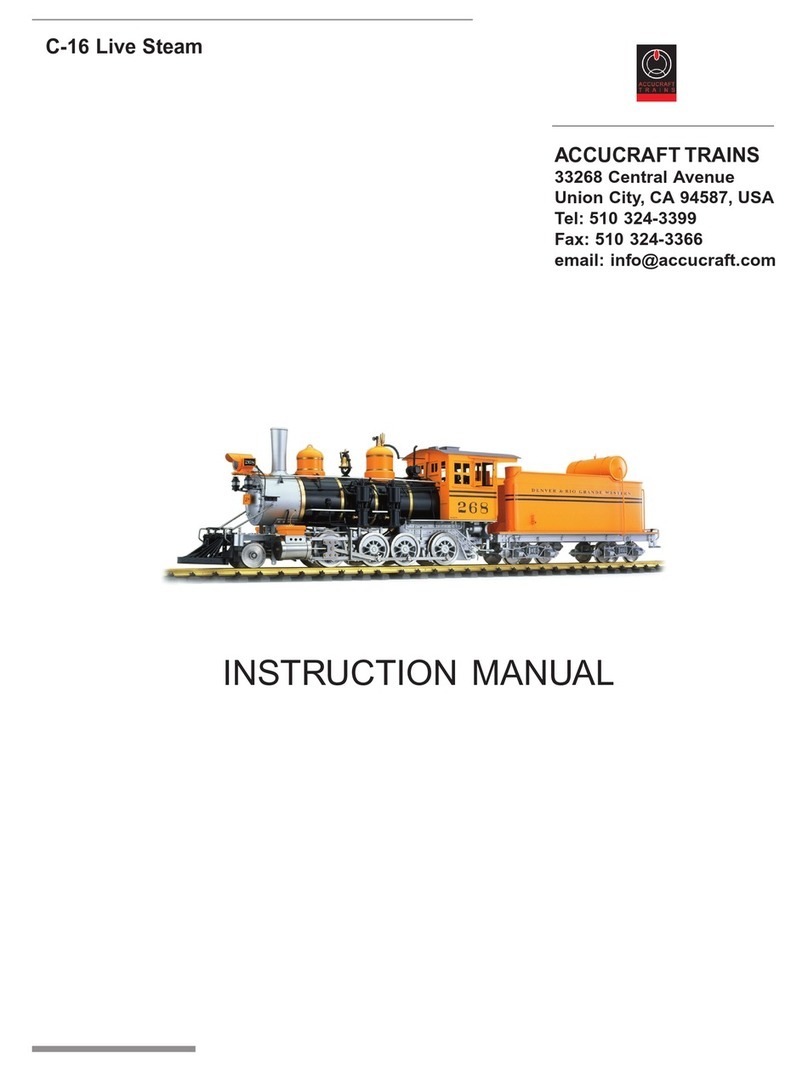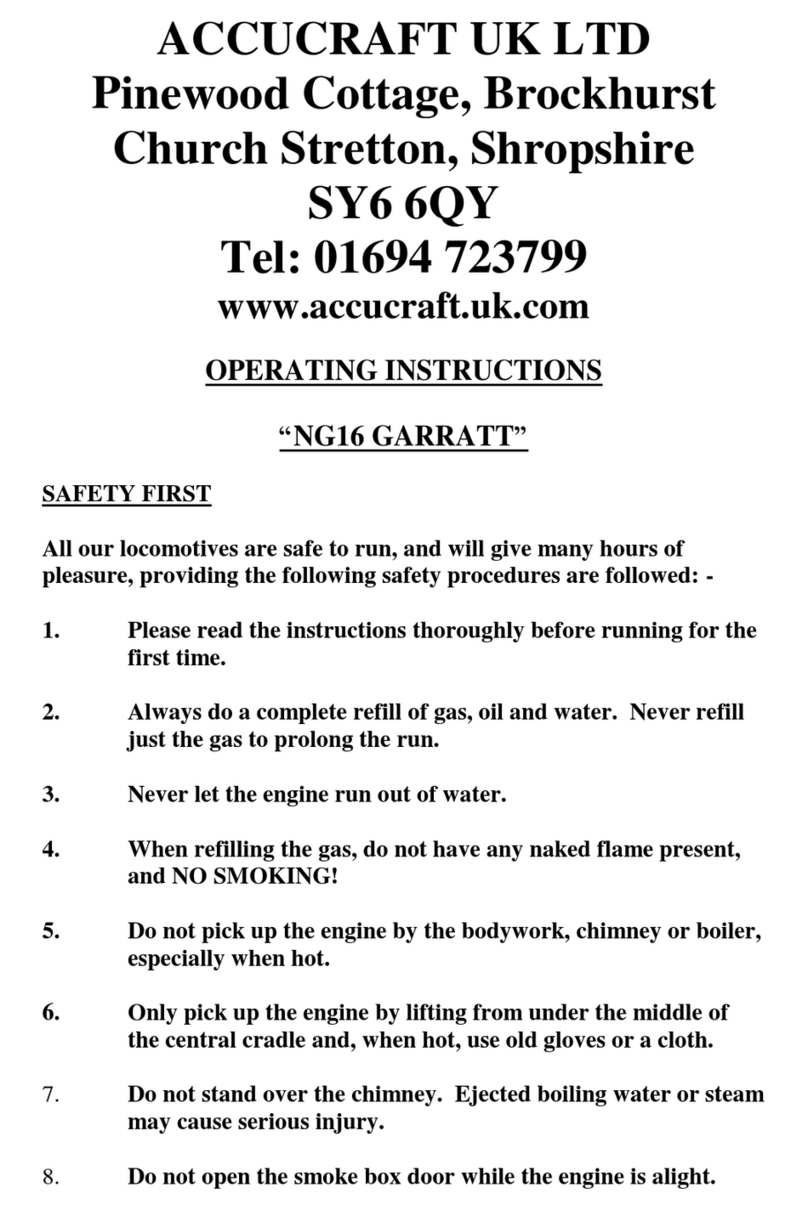
“outside” positions). This will allow water in the cylinders to drain while the cylinders heat up
to working temperature. As steam enters cold cylinders, it condenses, so expect a fair amount
of water to come out at the beginning of each run. Once the cylinders have warmed up, you
can close the drain cocks, if you wish. However, because the holes in the drains are so small,
the engine can be run with them wide open if you like the steam effects. To close them, move
the levers to the “up” position.
Running
Move the reversing lever at the right side of the cab to the forward position. With the engine
on the track, and without a train, open the throttle. The engine may need to be pushed a little
to overcome the steam condensing into water in the cold cylinders, but the open drain cocks
will minimize this. After a few moments, the engine should take off on its own, moving away
smoothly.
Once the engine is running smoothly, a train can be coupled on and the run can proceed.
Since all of the locomotiveʼs functions are controlled from the cab, it can be driven like a full-
size engine, meaning that youʼll have to stay with the engine through the run if you want to
change its speed or direction. If you have a suit-
able track, the engine can be left to run on its own at a steady speed. Keep your eye on the water
glass. When the water level reaches the bottom of the glass, shut the engine down and repeat
the firing up process. With practice and good weather, steady runs of an hour or more are not
uncommon for this engine.
Shutting down
To shut the engine down, simply close the gas valve and allow the engine to run off any
residual steam. At the end of the run, open the blowdown valve and leave it open. This will
relieve the boiler of what little pressure remains and prevent a vacuum from forming inside
that could draw lubricating oil into the boiler if the throttle valve is not fully closed. Because
of the size of this engine, blowing down could take several minutes.
After a dayʼs operation in the garden, youʼll probably find that your engine has a coating
of oil all over it. This is steam-cylinder oil that has been exhausted from the stack. A simple
wipe down with a dry cloth is all thatʼs necessary to restore the engine to pristine condition.
This is best done while the engine is still warm. Wipe any grit and excess oil from the wheels
and running gear.
The boiler can be drained of water, or not, as you wish. Leaving water in the boiler will not
harm it. The lubricator can also be drained and refilled with steam oil in preparation for the next
run.
Cold-weather running
The weather can dramatically affect the performance of your locomotive. Cold and wind
can decrease efficiency to a disappointing level. Butane gas becomes liquid at 32°F and will
not work. As it approaches 32°, its pressure (and effectiveness) diminishes.
The compartment in the tender in which the gas tank resides can be filled with warm water
in cooler weather. This will warm the gas in the tank and keep its pressure up, which will cause
Instruction Manual - D&RGW K-27 Live Steam
Drain cocks open Drain cocks closed
Blowdown valve

